Capital:
Beirut
Currency
Pound
Best time to visit:
Spring (mid-March to late April) and autumn (late September to late November), when the heat is not too intense, are the best seasons for a trip to Lebanon.
In a word:
Marhaba (good morning)
Vaccines
None
Warnings:
- Never use your credit card for payments or withdrawals, you would risk paying more than 25 times the value;
- Bring only cash and exchange at the various "unofficial" exchange offices;
- Watch out for exchange rates, they can vary so much from day to day.
At the table:
Carnivores will appreciate shawarma, sandiwch stuffed with mutton or chicken cooked on a spit, which are sold everywhere. Try the warak arish kateh, stewed meat wrapped in grape leaves, or the delicious toum (garlic sauce) to the wonderful knefe (traditional sweet made with phyllo and cheese) or the many typical Tripoli treats
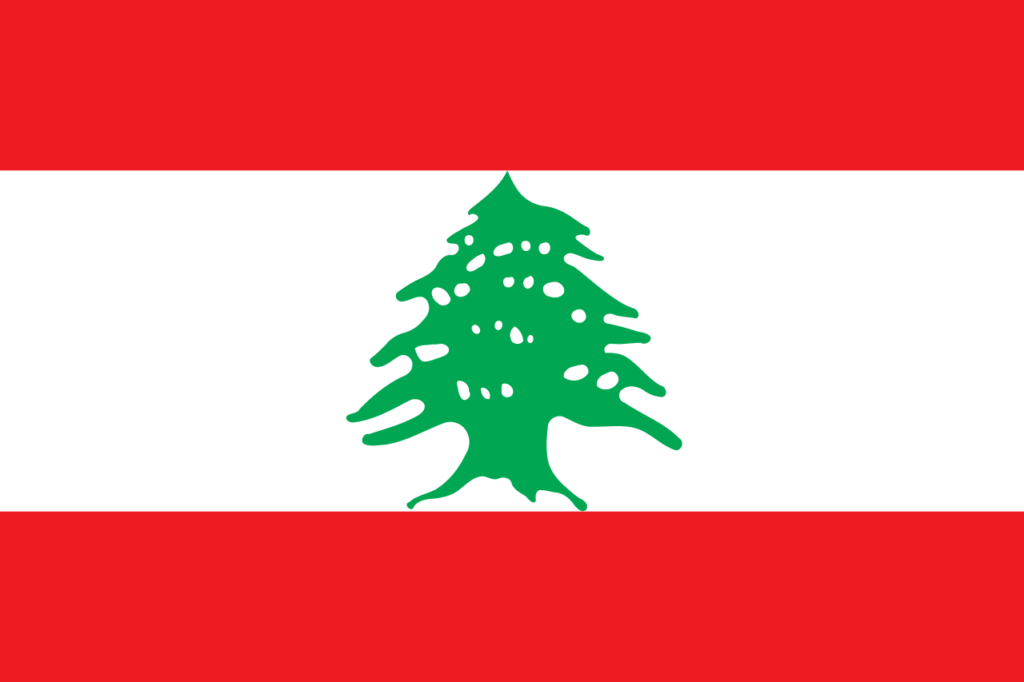
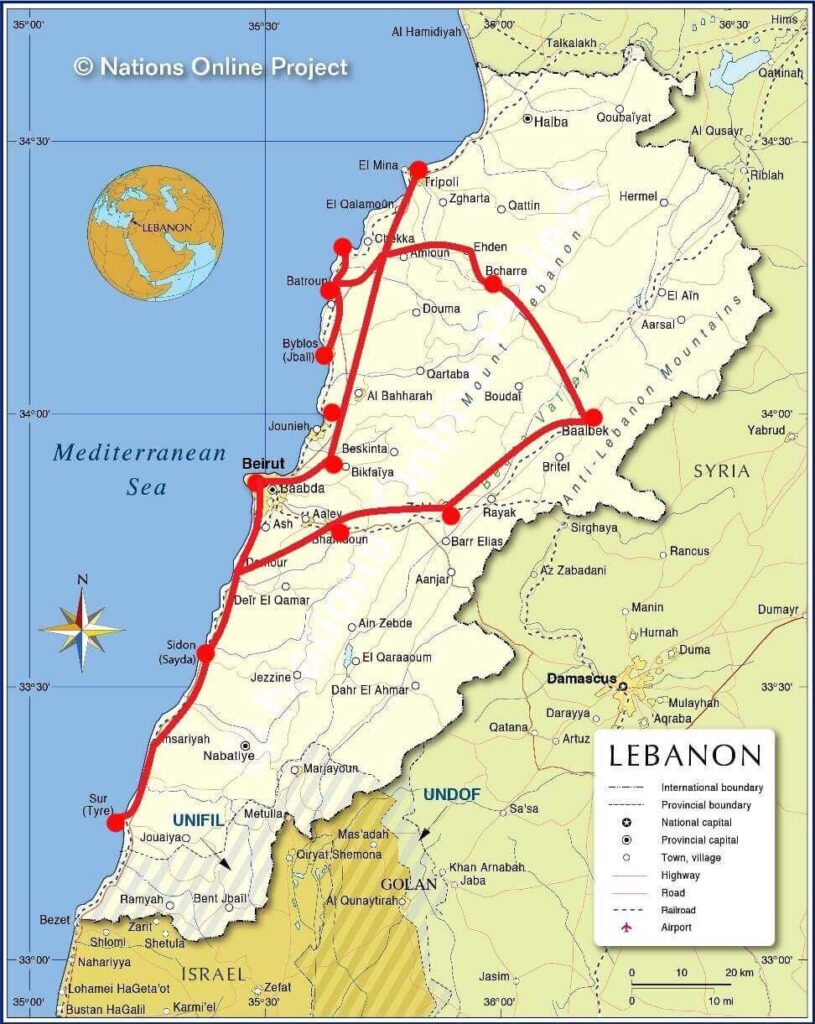
Essential experiences:
Stroll along Beirut's Corniche, perhaps at sunset, to the stunning Pigeon Rocks; Sample all the delicacies of Tripoli's souq; Lose yourself in the history of magical places such as Baalbek, Byblos, Sidon or Tyre.
Today's Lebanon is desperate to shake off the dust of the rubble of the long and brutal civil war that ravaged this small nation from 1975 to 1990.
Lebanon offers the visitor millennia-old ruins, medieval souqs, fascinating cities and magnificent scenery, all concentrated in a small area (think it is the size of Basilicata) that allows one to travel great distances in a short time. Today it can be visited very quietly thanks to the improving social situation but especially to the fact that no visa is needed for entry!
Our suggested itinerary (12 days) | |
three days: | Beirut (walking tour of the Gemmayzeh and Hamra areas); visit to the Jeita Caves; Bchaaleh (discovery of the millenary olive trees and the rural area); Batroun (tuk tuk ride) |
two days: | Tripoli (visit to the souq, tasting of traditional sweets, tour of the port of Al Mina); Anfeh (the Lebanese Santorini) |
four days: | Kadisha Valley (visit to the Deir Mar Elisha and Deir Mar Antonios Qozhaya Monastery); Byblos (visit to the Citadel, the port and the souq); Baalbek (visit to the ruins); Qob Elias (wine tasting); Chouf (visit to the Cedar forest) and Maaser's Farm |
three days: | Sidon (visit to the Castle of the Sea, mosques, souqs and khans); Tire (visit to the Necropolis and the port); return to Beirut |
We land in the famous Beirut! The old "Paris of the Middle East" of the 60s even if a little decadent. The civil war has brought this delightful nation to its knees even if now its inhabitants are trying to enhance it again as it did in those glorious years when it was the favorite destination of the international jet set.
Romantic and cursed, beautiful and impossible for a long time, Beirut is a city with an identity in perennial balance between tradition and modernity; it is also a city of strong contrasts; the beautiful buildings and tastefully restored houses of the Achrafiye neighborhood alternate with populous apartment buildings left to fend for themselves. Luxury cars driven by elegant businessmen or treated women a little touched up by the plastic surgeon circulate among rusty taxis from another era.
It is a place where, now, Christians and Muslims live in peace and harmony, where churches stand next to mosques and where mutual respect reigns ...
In this adventure we will be lucky enough to collaborate with an interesting local tour operator Tourleb led by sweet: Nada and Joelle who will make us live their country like locals… what better way?
Who are Nada and Joelle? They are locals, storytellers, gourmets, nature lovers.
They have created this all-female tour operator and work to include and welcome everyone, regardless of their life path.
Traveling with them means experiencing Lebanon to the full, visiting social enterprises, NGOs, startups and small initiatives. Great connoisseurs of their country, their motto is: “Come as a traveler, live like a local, leave as a friend” And that's exactly what happened to us!
We decide to use Beirut as a base to visit the nearby places of interest and choose the wonderful "The Parisian Hotel" as accommodation. Good choice! Its location is perfect, just a stone's throw from the marvelous "Corniche" and very central, a super friendly staff that pampers you from the first moment you step into the hall; excellent breakfast buffet or in the room (congratulations) and room equipped with every comfort and convenience. This is our trusted hotel in Beirut!
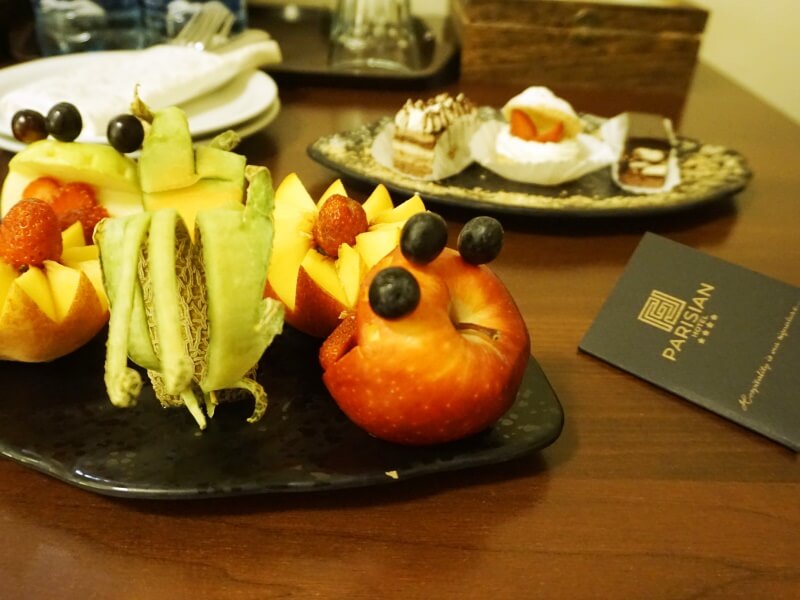
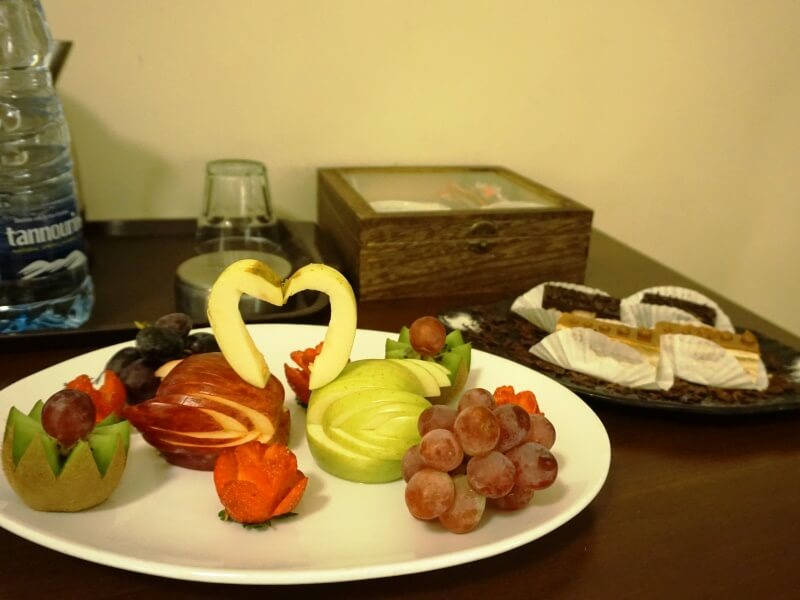
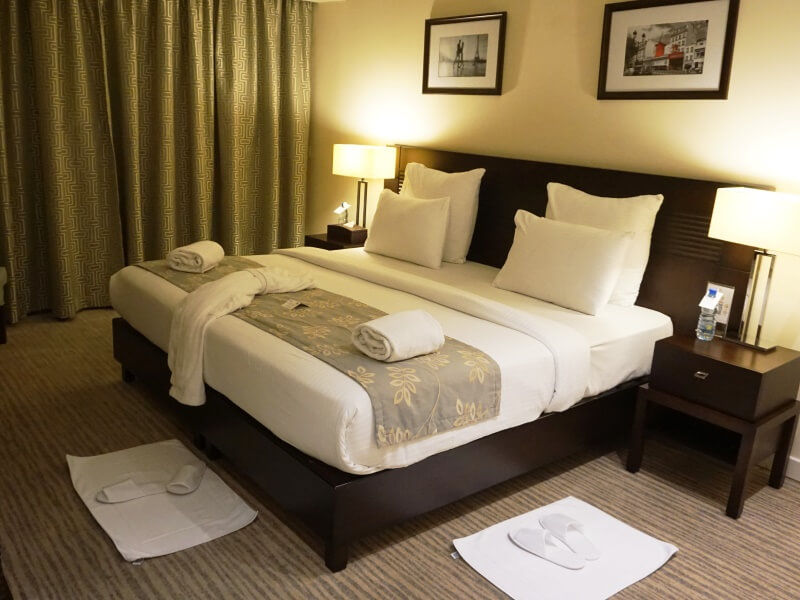

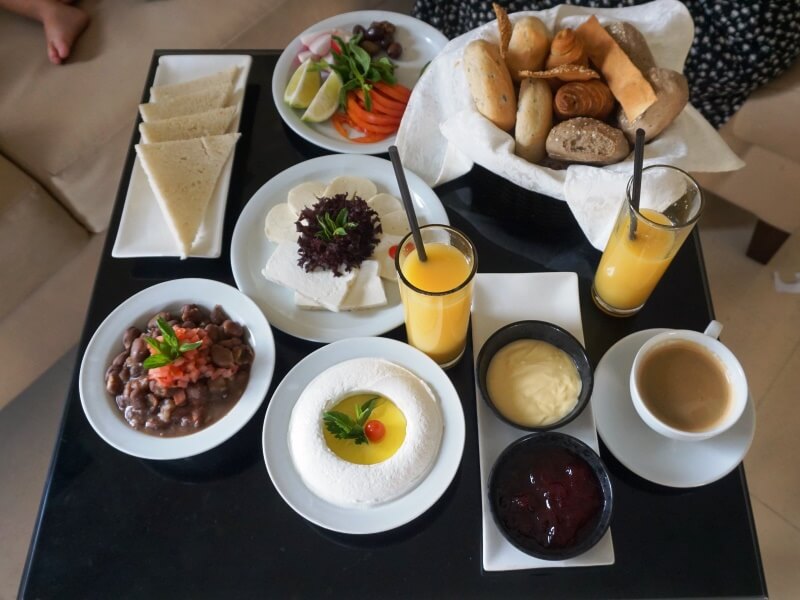
Do not miss the opportunity to visit this city on foot thanks to the Alternative Walking Tour, official partner of Tourleb.
We start from Beit Beirut, the building symbol of the civil war and placed along the "green line", the green line that divided the Christian neighborhoods from the Muslim ones, no-man's territory and controlled by snipers on both sides who hit anyone who tried to cross it. .
This imposing building, whose façade is still riddled with hundreds of shots, now houses a series of performances by local artists and, at the same time, tells the story of those terrible years of profound suffering. be careful: it is only possible to visit it if there is an exhibition in progress!
In particular, you are struck by the contrast between the splendor, the frenetic worldly life of the 60s and 70s with the atrocities of a fratricidal war up to today's desire for rebirth, of young people and new generations!
The tour continues with a visit to different neighborhoods in the center where Aya tells us numerous anecdotes and interesting stories that make us even more passionate about this land!
Not far from Beirut, at 1300 meters, stands the village of Bchaaleh. Here we meet Rania, founder of the Olive Trail. This area is famous for its millenary olive trees, it is said that they are from 2000 to 5000 years old but the extraordinary thing is that, even today, they produce delicious olives that give life to one of the best extra virgin olive oils!
Rania and her team are working hard to enhance their territory so much so that they have traced a route (26 km) called "Olive Trail" following the ancient paths of their ancestors that cover the entire area passing through the ruins of numerous monasteries and sacred places of a distant past.
We really enjoyed the morning immersed in this nature with ancient flavors in an extraordinary background.
Batroun. The first thing that strikes you is the old port which preserves an ancient sea wall from the Phoenician period, it is very picturesque and around it you can still admire a series of Ottoman stone houses still well preserved but who dominates the scene is certainly the Orthodox Church of San Giorgio, yes, consider that almost half of the population is of Christian faith. Here you can admire 21 painted tables and doves carved in wood above the altar which are very characteristic.
The best thing about this small town is definitely the nice vibe it offers. Its small alleys are framed by bars, restaurants, pubs and guest houses, each with its own identity and well integrated into the architectural and artistic context of Batroun!
So get on one of the many tuk tuks and wander through its narrow streets until you reach the view point on the Mediterranean Sea to enjoy one of the most romantic sunsets ever!
An extraordinary series of cavities filled with one of the most impressive stalactite and stalagmite formations in the world. These marvelous caves that extend for about 6 km, were used as an ammunition depot during the civil war and were finally reopened to the public in 1995.
The upper cavern shows a long series of truly exceptional stalactites and stalagmites while the lower one, which can be visited aboard a small boat, will leave you speechless for its beauty softly illuminated by dim lights.
The second largest city in Lebanon after the capital, full of well-preserved lively medieval souqs, countless historic buildings and a busy Al-Mina port.
Tripoli is also known for being the capital of Lebanon's confectionery industry: a visit to the city will not be complete without several pit stops where you can refill with sugars, honey and pistachios!
Our guide Marijo shows us the old city (Mamluk era) which is a labyrinth of narrow alleys, colorful souqs, hammams, khans, mosques and shops of all kinds. This is a very lively place where artisans, including jewelers, tailors, soap makers continue to work with traditional techniques handed down from generation to generation.
Very interesting is the hammam Al-Abd, the only public bath in Tripoli still in operation and built around 1700, today it is run by a large Syrian family and the internal atmosphere is really fun!

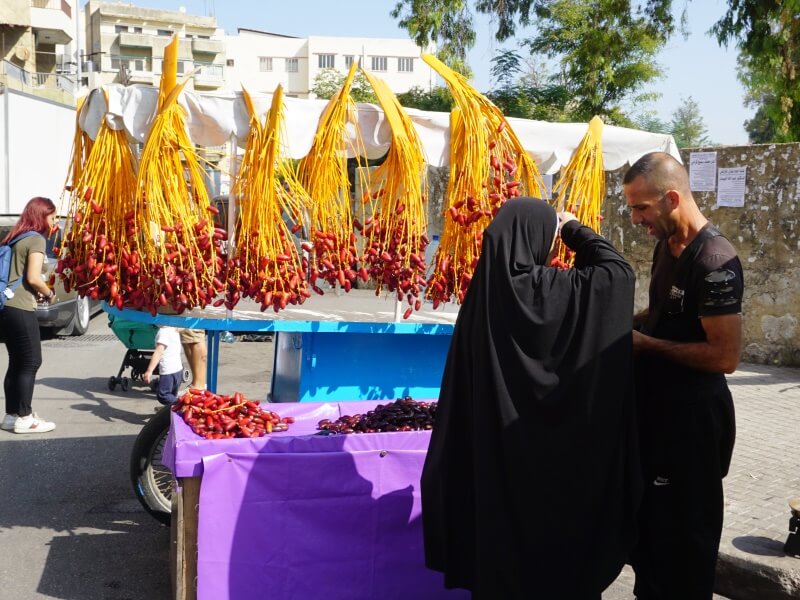
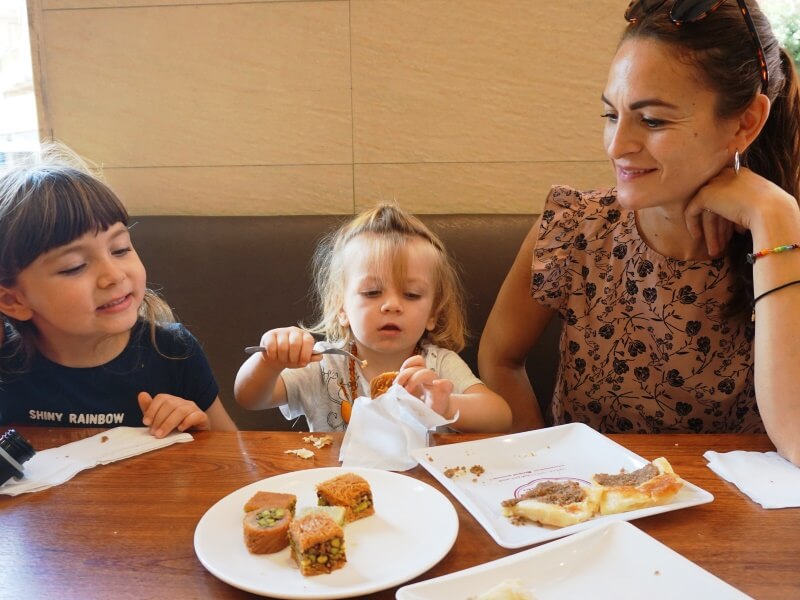
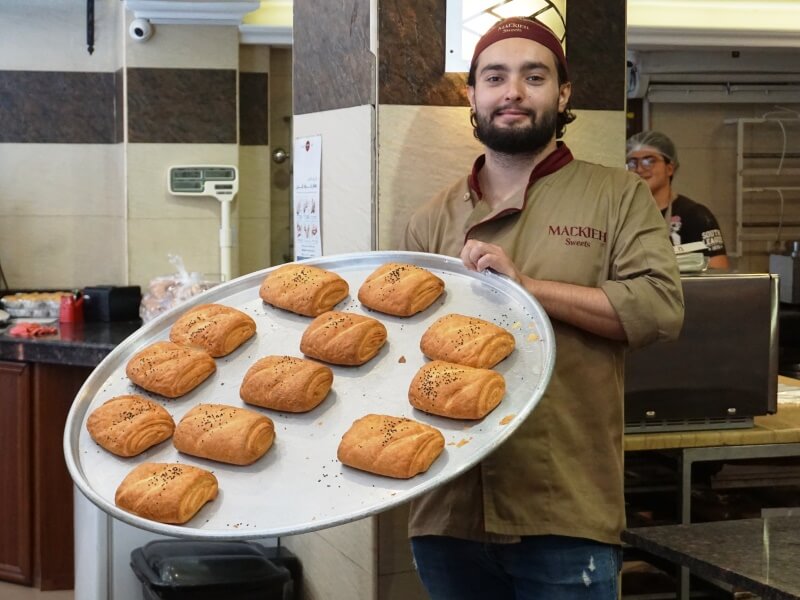
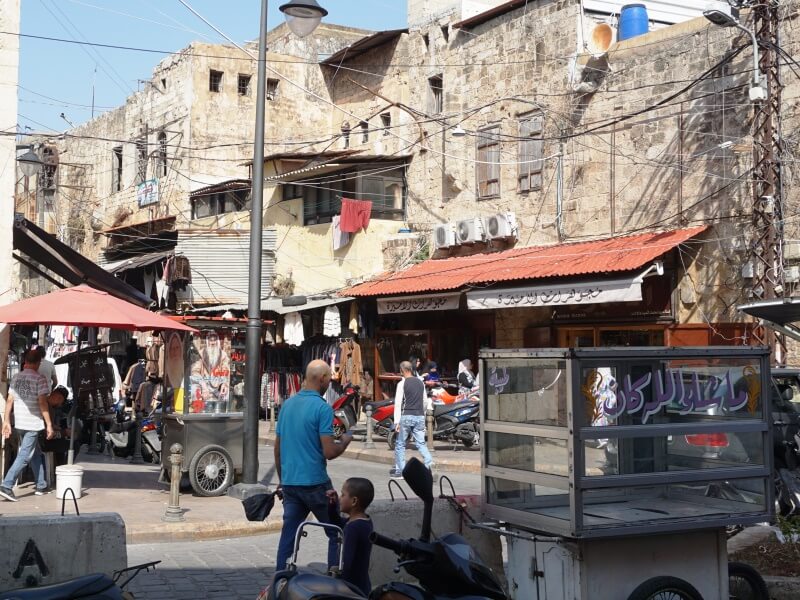
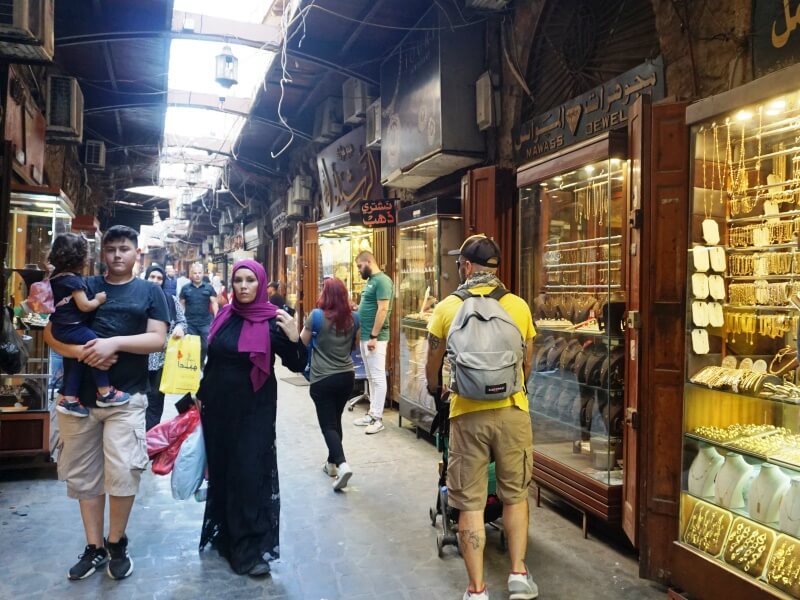
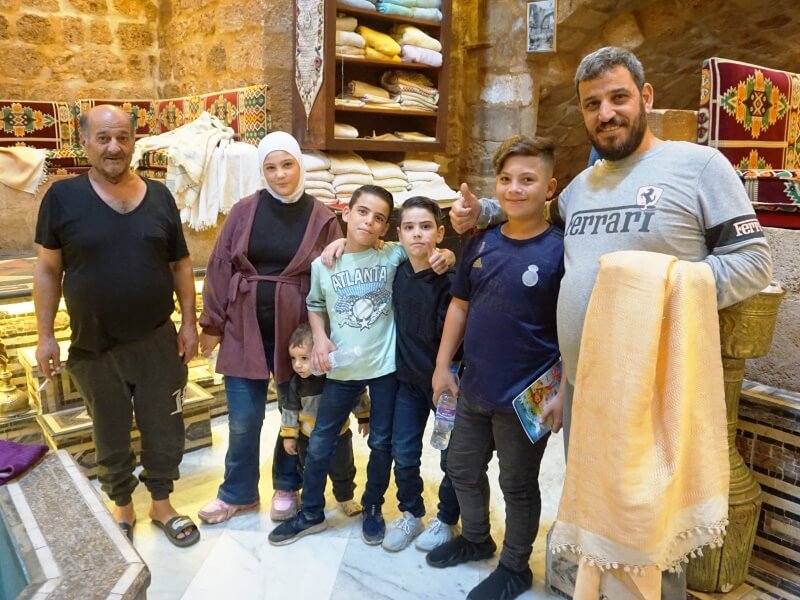
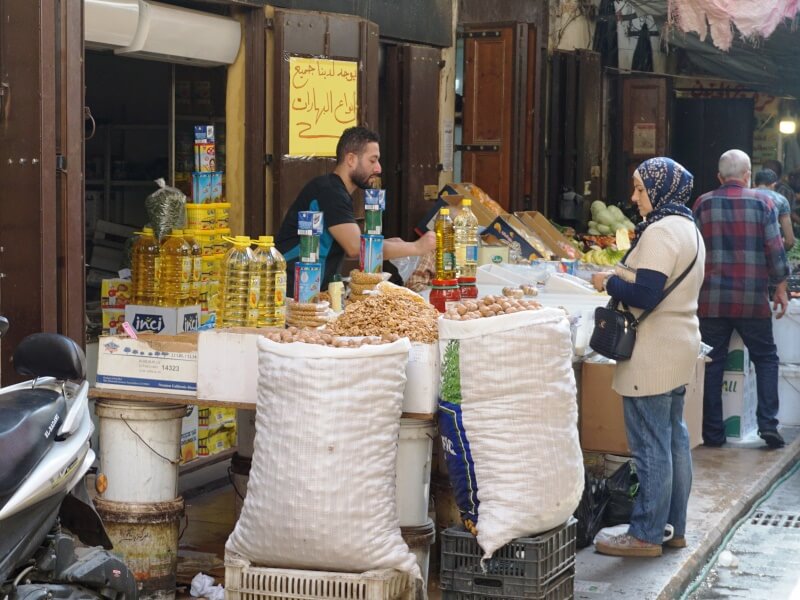
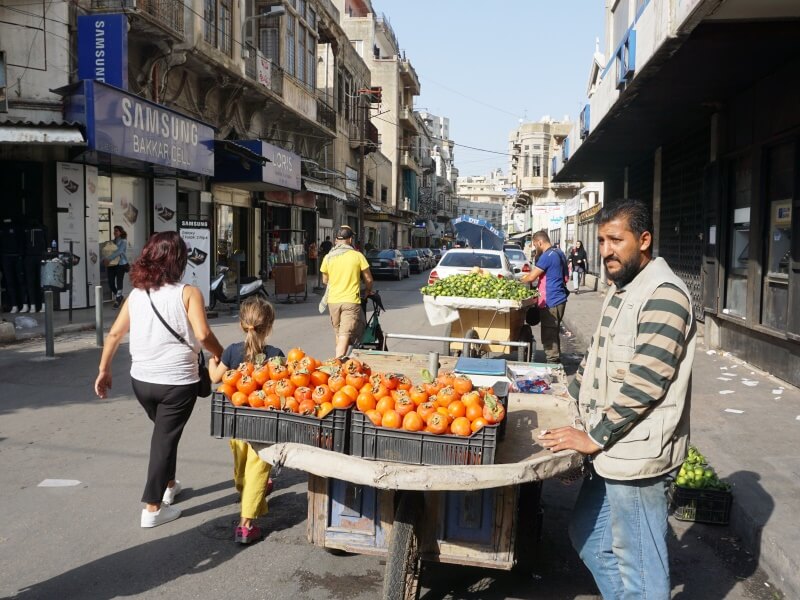
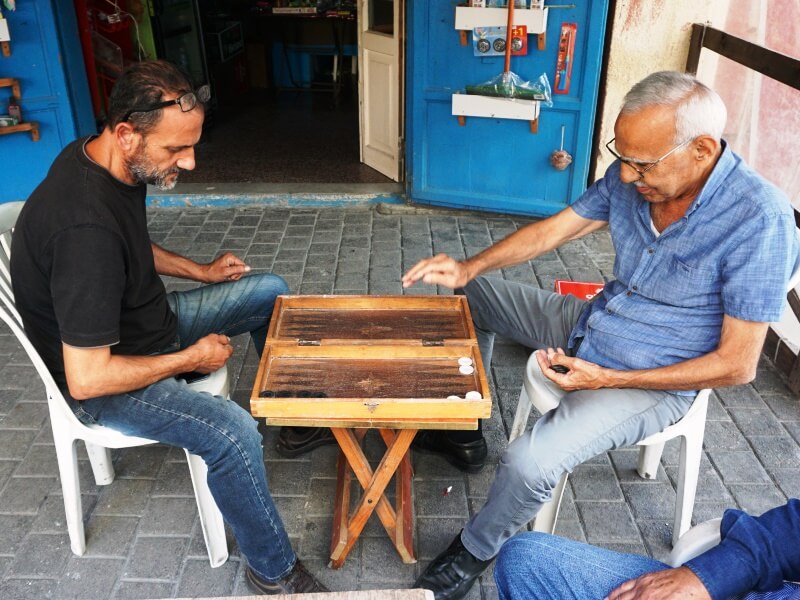
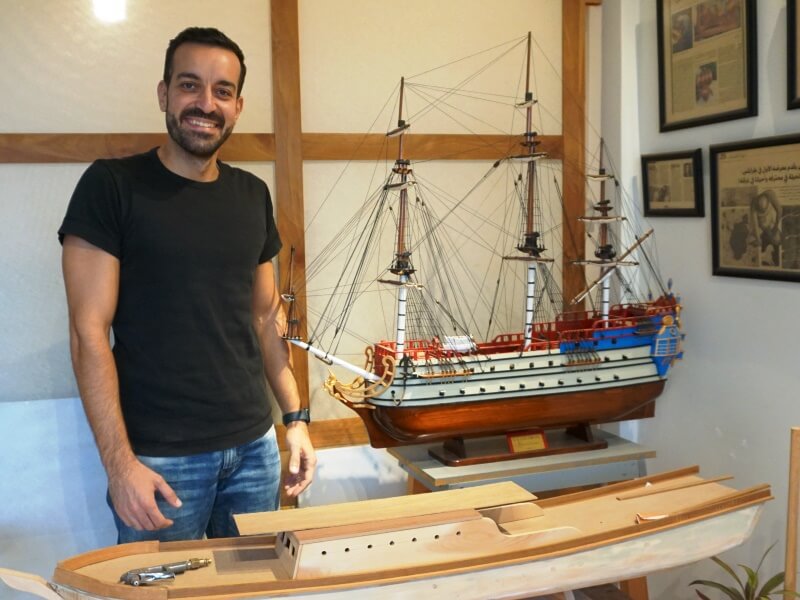
Although there are only a few traditional soap makers left in Tripoli today, in the past this industry was one of the pillars of the local economy, there are even those who claim that soap was invented here!
Traditionally, the soap was prepared with olive oil, honey, glycerin and other natural ingredients mixed in a huge tub and then colored with saffron and other natural dyes and then scented with essential oils. We stop for a short visit at Masbanat Awaida where we witness the preparation and creation of this precious product.
Finally, pay a visit to the great mosque which was built on the ruins of a 12th century Crusader cathedral in fact the minaret is obtained from a Lombard tower and this feature makes it truly unique.
Before leaving this city, take a walk along its "Corniche" as the sun sets on the horizon!
Anfeh in Arabic means "nose" and refers to the geographical shape of its coastline.
today it is a predominantly Greek Orthodox city with many churches that arise here and there as well as being the quintessential summer paradise for Lebanese revelers who, in the summer, flock here for the trendy clubs and disco music played by every shack from the typical white-blue color so much that the locals call it: “Anforini” in reference to the Greek town of Santorini.
This time we are staying in a wonderful villa by the sea: "O Fleur De Sel". Romantic, elegant. Located in the center of the historic bay of Anfeh, this renovated 18th century estate is the ideal place for those seeking to escape from everyday life in search of some healthy mental relaxation.
Each room differs from the other in the details taken care of with care by the owner Mr Ziad himself, to guarantee guests a pleasant, different and unique experience. Our master suite consists of two double bedrooms, a private living room, a kitchenette and a roof terrace with a dream view of the bay!
Day dedicated to the monasteries of the Sacred Valley (Kadisha Valley), a UNESCO World Heritage Site.
We start with "Deir Mar Elisha" (Sant’Eliseo) built into the side of the slopes near Bcharrè, part of the monastery has been restored and transformed into a museum that preserves numerous books and documents relating to the history of the monastery.
Short stop in Ehden at the excellent family-run restaurant "Jalset Alsayad" where the chef Sarkis Azizi delighted us with a long series of typical Lebanese dishes: sfiha traboulsiyeh (bread with minced meat), toum (garlic sauce), shanklish (excellent sheep's cheese), kebbeh (borghol dough ball) of raw wheat with flavored meat), shish taouk (marinated chicken shish kebabe) just to name a few ... really one better than the other.
It is the turn of "Deir Mar Antonios Qozhaya", the largest hermitage in the valley and famous above all for the cave of St. Anthony, also called by the locals "Grotta del Fatto". In it you can still see the chains that immobilized the mad or those possessed by the devil who were left at the monastery in the hope that the saint would heal them.
Byblos, with its ancient fishing port, Roman site, castle and souq enchants its visitors.
The most important feature is that it has been continuously inhabited from the most distant antiquity (even before the great civilizations of the Middle East developed), it is thought that it was already inhabited in the fifth millennium BC. and that in 3000 BC was a real city.
In its heyday, before the civil war, Byblos was the port where the yachts of international celebrities docked. Today at the ancient market "the make-up has been redone but it remains the ideal place to search for your souvenirs!"
Do not miss the tour to discover the ruins of the ancient citadel. You enter from the Crusader Castle, an imposing structure with gigantic stone blocks, the view from the ramparts, the defensive systems of the citadel is wonderful.
Very interesting is also the visit to the "Memory of Time" where they showed us the techniques used for the discovery of fossils dated more than 10 million years ago.
We have lunch near the city at “Al Mina Restaurant”, a delightful restaurant by the sea where we enjoyed one of the best fish-based lunches ever!
Romantic background, sound of the sea waves, the setting sun, Iago dozing in his stroller, a nice group of Italians, Bulgarians, Americans and Lebanese for a wonderful afternoon!
We stay at theAleph Boutique Hotel.
Located in the heart of the historic city of Byblos, just 5 minutes walk from the oldest ruins in the world. With its privileged location overlooking the Mediterranean and the Citadel, the hotel is the right mix of antiquity and modernity, offering its guests high levels of comfort as well as a breakfast with a unique view of the timeless ruins of Byblos!
Today we cross the Bekaa valley, a plateau between the Mount Lebanon and Anti-Lebanon ranges; for millennia this has been the connecting corridor between the Syria and the coastal cities of the Phoenician state.
The background changes numerous times, from the heat of Byblos we pass to the coolness of the 2000 meters of the mountain passes and during a photo stop we are even stranded with our car ... excellent opportunity to take a stroll and end up in the cottage of some shepherds who worked the cheese and solve, thanks to one of them, the car problem (faulty battery cable).
Before reaching our destination we stop at the "Lakkis Garden", an excellent restaurant run by Gina who, with her husband, made us taste a lavish lunch with the best Lebanese specialties!
We even sneaked into one of the kitchens where they prepared excellent "mezze" (Arabic aperitifs) based on bread and minced sheep called "sfiha" ... divine!
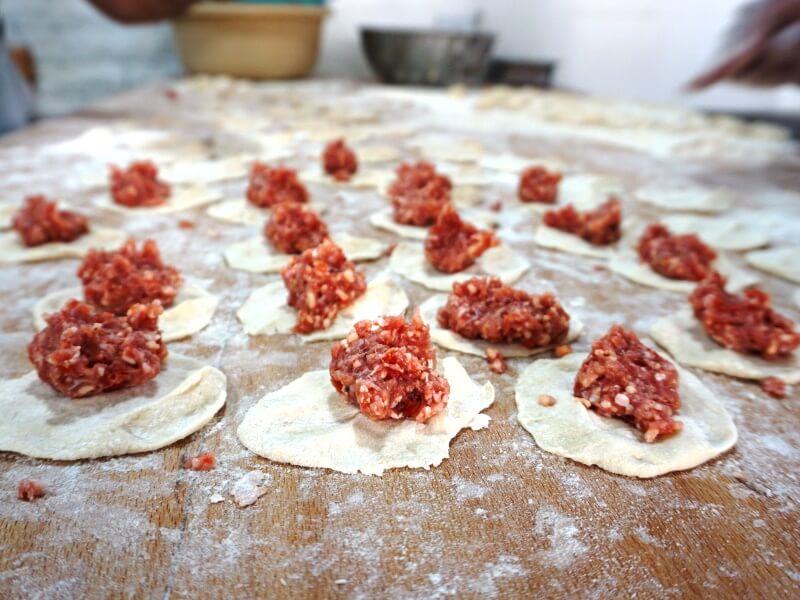
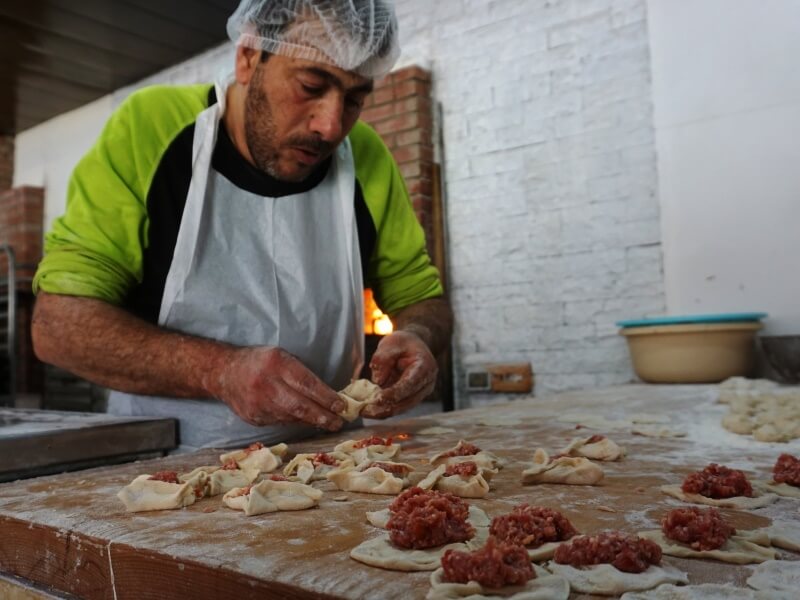
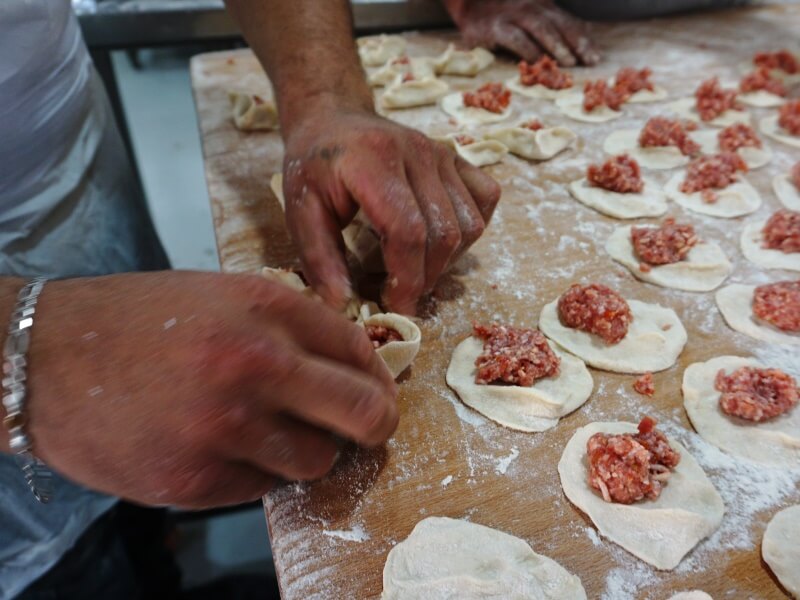
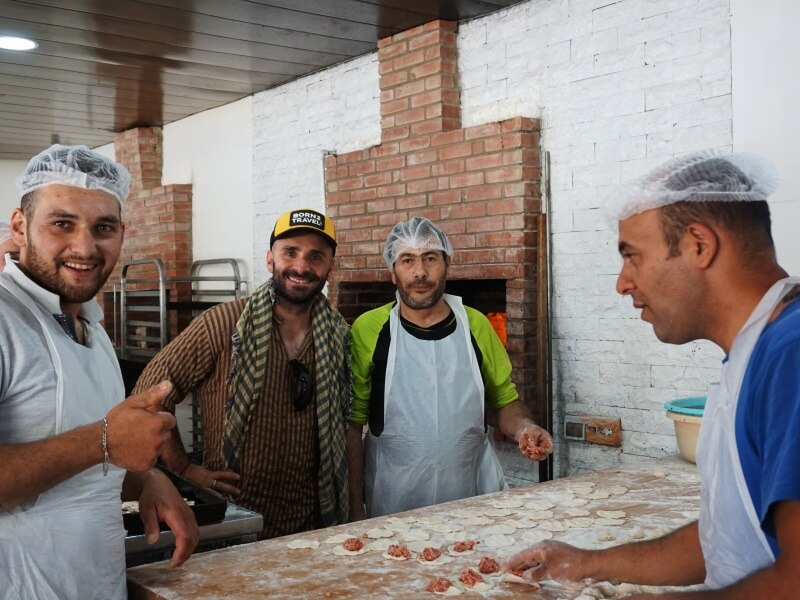
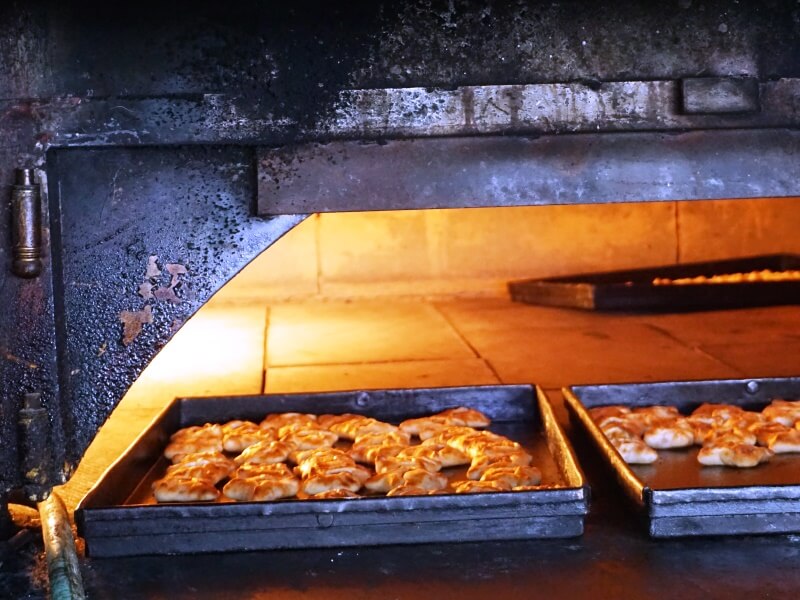
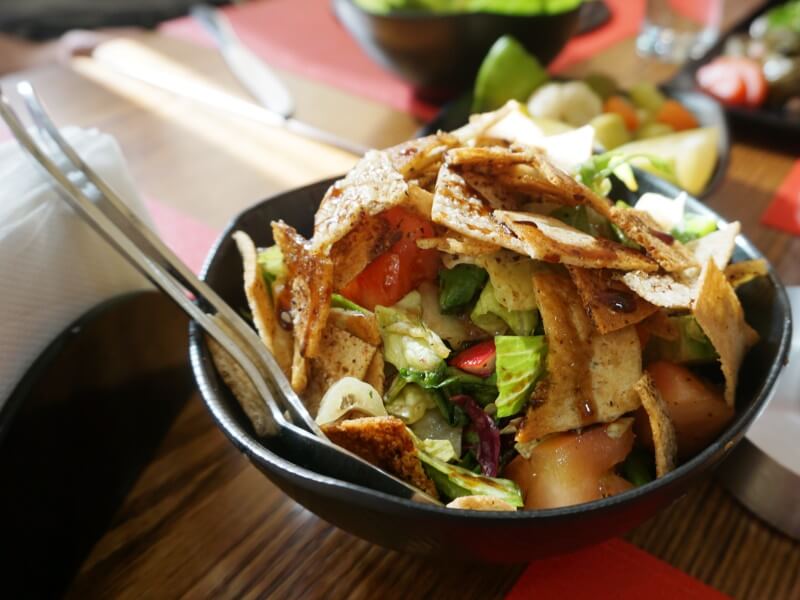
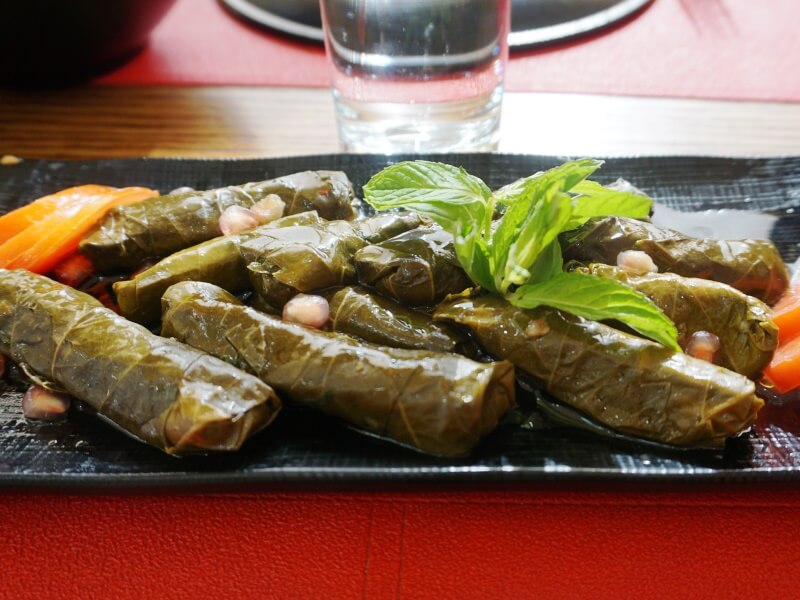
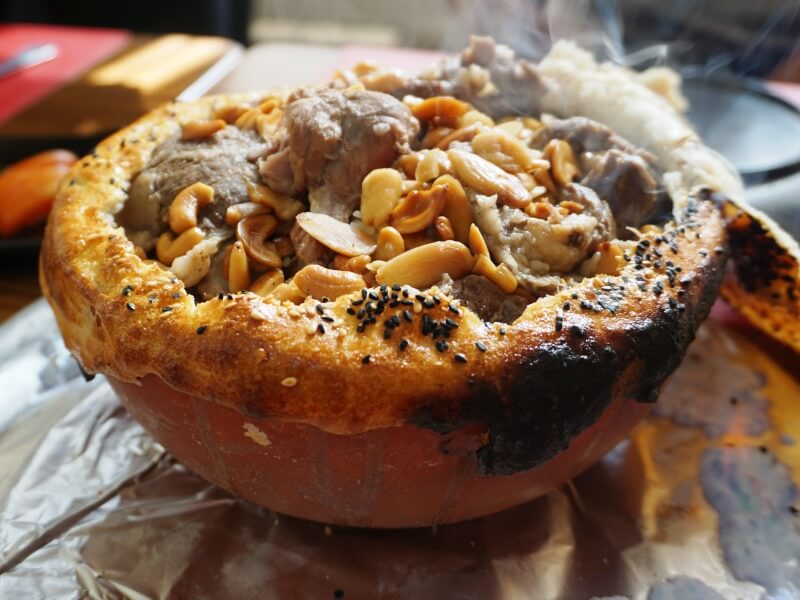
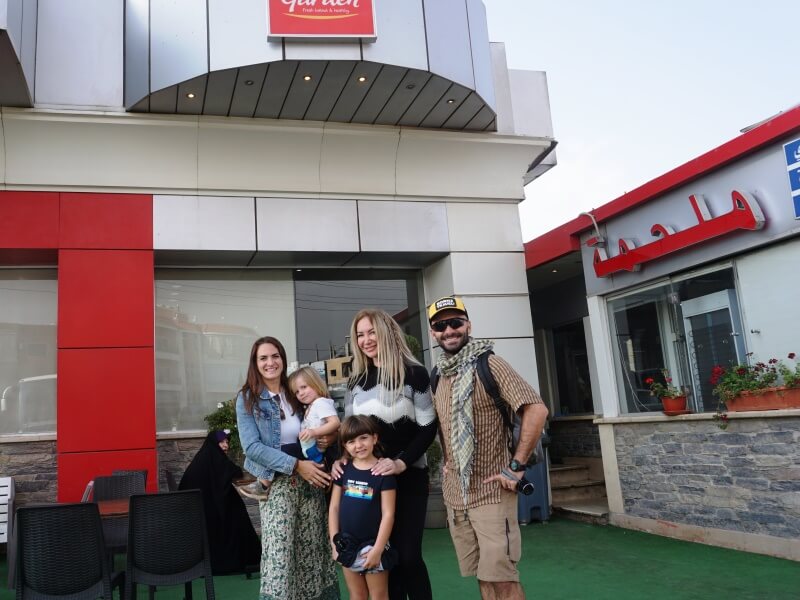
Baalbek, the "city of the sun" of antiquity, one of the highlights of Lebanon but also the most important Roman city in the Middle East.
It was once believed that Baalbek was one of the wonders of the world and there are still those who attribute magical powers to it!
In the presence of its majestic columns you feel really small, wander among its ruins that tell a story of hundreds of years and different cultures and eras.
Admire the wonderful view from the "Temple of Bacchus" characterized by some decorations that, according to many scholars, are among the most beautiful among those that adorn Roman temples in general thanks to the excellent state of conservation.
Along the way we stop to admire first the so-called "largest stone in the world" and then what was once a railway station!
We spend the night in Qob Elias, at "Domaine de Chouchene”.
In an ancient villa of more than 200 years with five acres of gardens and orchards, historic architecture and a 17th century water mill, nestled along the clear waters of the Chouchene River.
They haven't been around for half a century now!
We reconstruct history a little! In the past, Lebanon was almost a pioneer of railways, the first train of the Damascus-Beirut route left on August 3, 1895, thus inaugurating rail transport in the Middle East.
In the first half of the 20th century, passengers commuted between Beirut and Damascus, Istanbul, Baghdad and even Mecca. However, when the civil war broke out in the 1970s, the railway system was damaged during the long civil war and has since been abandoned. The rails have disappeared, the wagons almost all rotten, the buildings looted.
Since about 1977 there have been no railway stations in service and there is no public transport network that can be called by this name. There are i services, almost always battered cars converted into collective taxis that take you from one part of the city to the other. There are minivans, vans without doors, with broken or blocked windows and smashed seats that connect Beirut to the north and south of the country and some buses.
Some work has been done in the country to reactivate the railways after the end of the civil war, but a positive result has not yet been achieved.
This area is famous for its vineyards and excellent wine ... why not take the opportunity for a good tasting? Here we are at "Chateau St Thomas” where dear Nathalie, with her other two sisters and a brother, tells us the story of her wine that has been going on for several generations, improving its product more and more, so much so that it has received numerous international awards!
We wandered around the futuristic cellar among wooden barrels, columns of bottles immersed in a very inviting perfume of must even for those who, like me, are not much of a drinker!
This is the largest protected area in Lebanon with an extension equal to 5% of the entire national territory. It encloses six cedar forests, three of which formed by centuries-old cedars, we have seen one that is even 3000 years old! Since the ban on hunting and grazing was severely enforced, numerous animal and plant species have returned to thrive in this area! More than 200 bird species and 26 wild mammals (wolves, gazelles, wild boars) now live in the reserve!
Time for a little break from a lady who prepares excellent Arab breads with cheese, onion and minced meat and nearby we meet Ghassan, owner of "Blatelatiq”, a small workshop that produces highly sought-after handcrafted tiles. Really a great artist!
Also nearby is the Maaser Donkey Farm an educational farm that offers numerous activities including: milking goats; to feed geese, chickens, rabbits, donkeys, goats; egg collection; ride on donkeys; fruit picking up to a relaxing mate with native herbs while admiring a very characteristic barren landscape!
On the way back we stop for a short visit to one of the most beautiful buildings ever seen! It is the residence of the leader of the Druze, an ethnoreligious group made up of the followers of a monotheistic doctrine of Shiite Muslim derivation.
Finally it is late in the evening when we reach our hotel: "Al Sindiana”.
Al Sindiana Boutique Bed & Breakfast is located in the town of Kfarkatra in the stunning Mannasef mountains of the Shouf district. The property offers a peaceful environment and a relaxing atmosphere. The owner, Mr Walid has created a corner of true paradise where class and elegance are the first two terms you think about if you are here. Walking through the estate you find yourself captured by a breathtaking scenery unique of its kind. Thanks to Alain and his team for the warm welcome and the wonderful breakfast with an incomparable view!

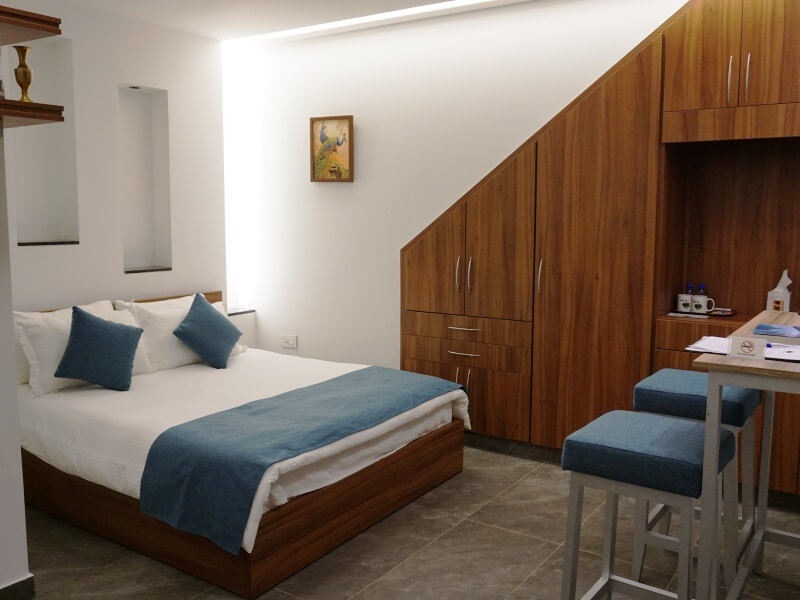
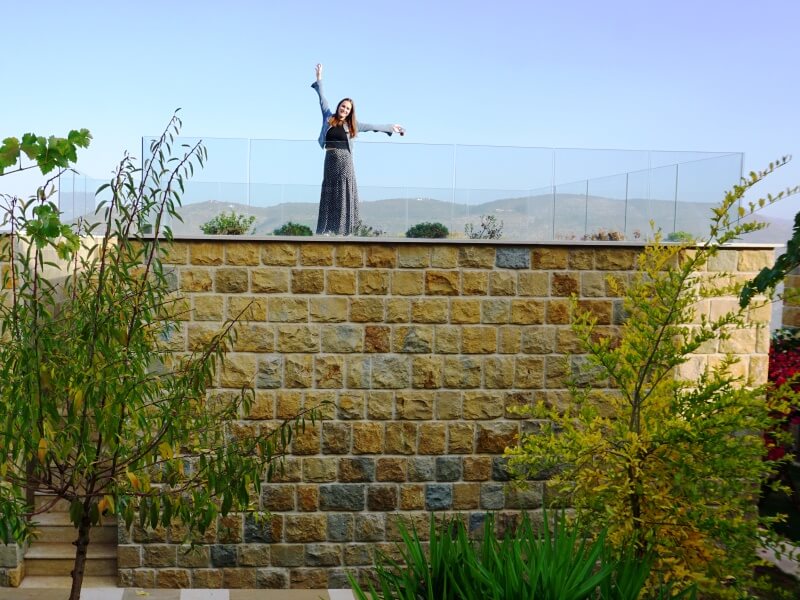
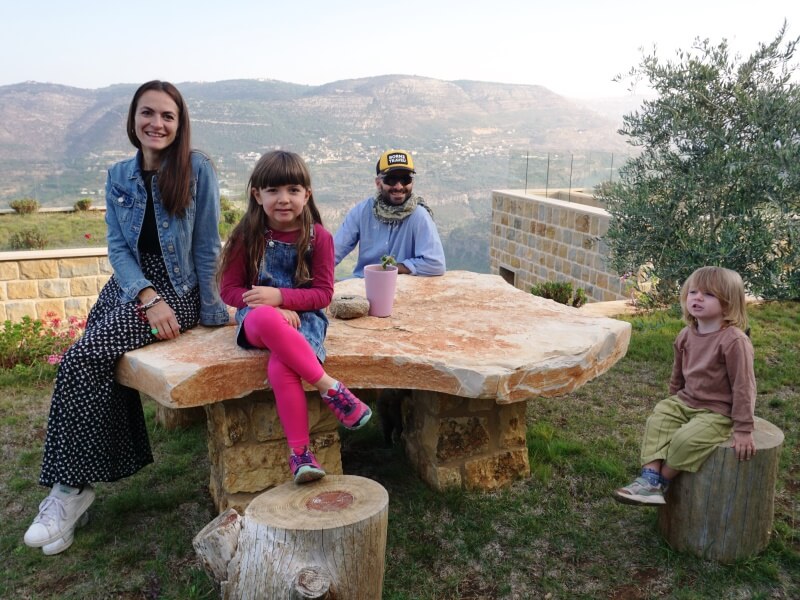
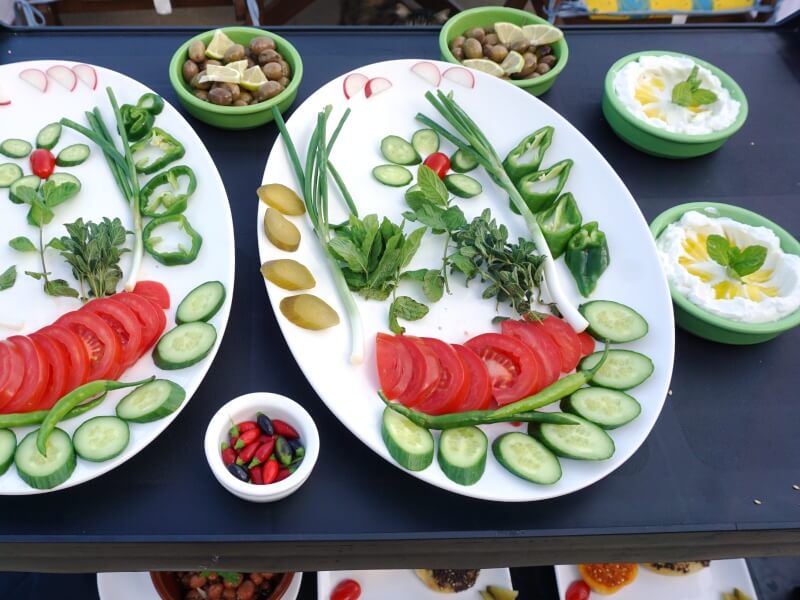
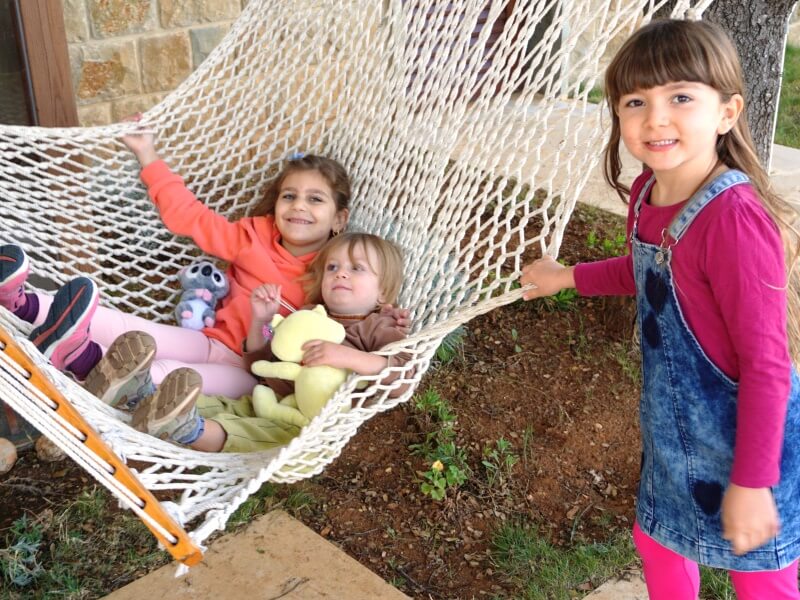
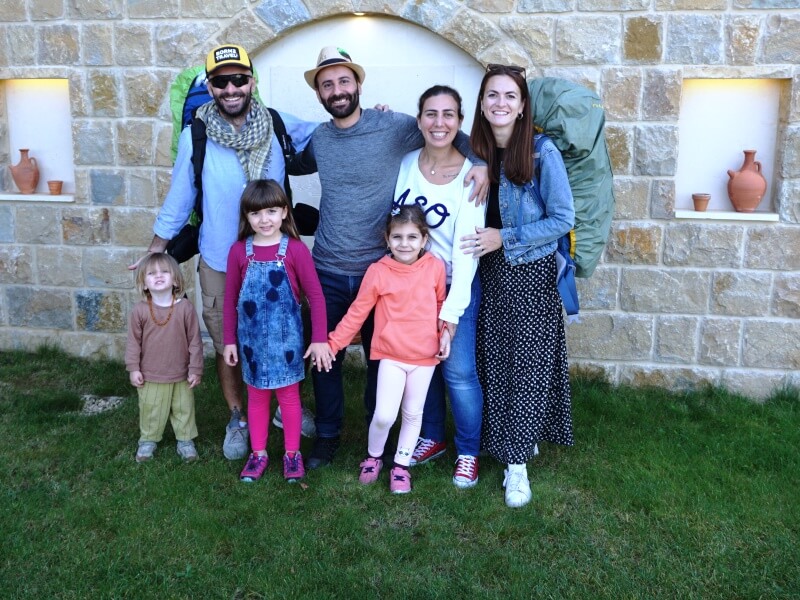
We move towards the south of Lebanon: Tire and Sidon, respectively called Sour and Saida in Arabic, are the most interesting cities from a historical point of view.
The port town of Sidon, surrounded by citrus and banana groves, was founded more than 6000 years ago. With its picturesque “Castle of the Sea”, built by the Crusaders, its mosques, caravanserais, its souq and its ancient palaces, Sidon is an important stop in the south!
Castle of the Sea. A beautiful fortress built by the Crusaders on an islet was largely destroyed by the Mamluks to prevent the return of the Crusaders, fortunately it was later restored by the Arabs and thanks to them it has come down to us!
It is an open-air museum, a bit like all of Lebanon, where many remains remind us of how many eras have been lived here continuously!
We enter its souq: a labyrinth of alleys where the shops of the many artisans who conduct their businesses meet as they have done for centuries. We stop to taste the best "knefeh" ever (dessert made from semolina paste soaked in syrup with sugar and layered with cheese), sweetened candies, lokum (Turkish sweets) and magnificent freshly fried "felafel"!
Hammam Al Jadeed, an old hammam no longer functioning and which now hosts photographic or painting exhibitions. I can say it is the most beautiful performance set I have ever seen thanks to its unique background where everything seems to be in the right place!
Debbane Palace, an example of an ancient aristocratic building, built in the mid-1700s, tells the story of the Ali Agha Al-Hammud family with many artifacts and collectibles.
We take a little break at the fast food "Mido’s” ideal for those who have had enough of Lebanese food, not our case, but we really appreciated his American-style dishes revisited in a Middle Eastern key!
A 40-minute drive takes us to Tire. After the suffering of the civil war and the Israeli raids, the city is now starting a slow process of revival!
Tire is the ideal destination for a trip to the sea, thanks to its beautiful beaches; its fish-based restaurants but, for sure, you will be impressed by its archaeological sites, first of all that of al Mina.
Its agora (market square), the colonnaded street, the different pavements (Roman and Byzantine), the remains of the arena, its necropolis, the ruins of the Roman baths will make you take a great journey through time!
We end the day walking around the small but lively fishing port with its colorful boats, its trendy cafes, its restaurants and the desire of the locals to have fun!
We go back to Beirut for the last two days. Our favorite hotel in the capital welcomes us warmly as usual, here we are again at the "The Parisian Hotel”.
It is a sunny Sunday here in Beirut, we calmly walk a large part of the wonderful Corniche among the locals jogging, fishing from the rocks, sunbathing lying on cartons or relaxing a good hookah.
Our destination is Pigeon Rocks. The rocks sprout like big mythological monsters and give life to this little natural jewel ..
These stacks are almost the symbol of Beirut, a romantic spot for tourists and couples, we recommend you stop for a drink in one of the many bars with a panoramic view!
We return to the center by taxi to Gemmayzeh. Stroll between rue Gouraud and rue Armenia along a boulevard between refined palaces, trendy clubs overcoming many often colored stairways, the most famous of which is the "stairway of St. Nicholas", 200 steps that connect Gemmyzeh and Ashrafieh, (difference in height of 500 meters ) very well known in the city as a meeting place for Lebanese youth, with a few small bars along the way.
We change the area. Hamra Street, a legendary street, famous especially in the 60s when it was the main nightlife spot with many cinemas and trendy clubs. Now there are restaurants, perfume shops, inelegant clothing shops where the soundtrack remains the noise of the horns of cars in the queue, the tinkling of coffee cups and the shouting of the Arabs.
We return to our area just in time to admire a last sunset along the Corniche as local families stroll peacefully, a few peddler stands selling pink cotton candy, boiled corn on the cob or colorful balloons and the last daredevil boys dive off the cliff.
Thanks Lebanon for all that you have given us, thanks Nada and Joelle for the beautiful experiences you have made us live! Until next time
Error: No feed found.
Please go to the Instagram Feed settings page to create a feed.
2 Responses
Thank you for this beautiful article dear Mark. I hope to see you again in Lebanon in order to check other important regions like, Akkar, Zahle, Hermel, Jezzine, Faqra etccc, every village in Lebanon has a story to tell.
Thank you so much dear Alain, we have loved the time spent together with you and your family. Lebanon is such a marvellous Country and its people are so genuinie and great. We can’t wait to come back there again.